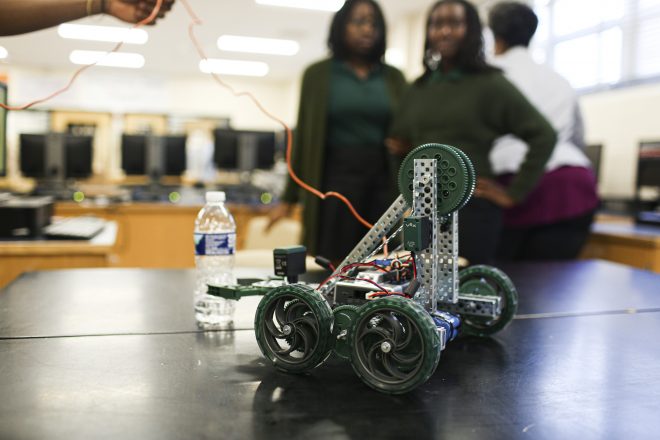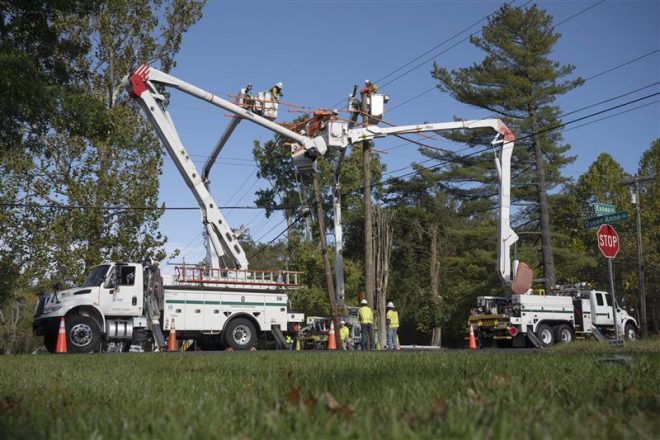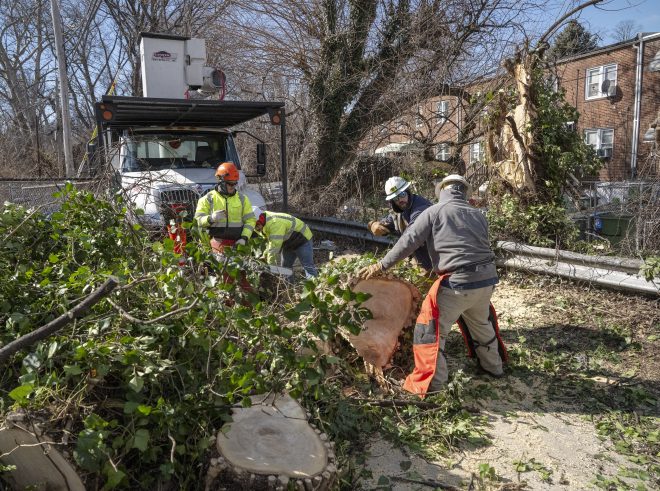
BGE drone team puts their work on display for Baltimore City high school students to highlight job opportunities in the drone industry
When you’re launching a commercial drone from a high school football field, you should expect an additional step in the pre-flight preparation process: break the huddle of captivated engineering students around you.
Andy McCauley and Zack Ratchford, drone pilots for BGE’s Unmanned Aerial Systems (UAS) team, sent their huddle of 50 Mergenthaler Vocational Technical High School students to the endzone before takeoff. Now a few dozen yards away, these three engineering classes could safely watch the most compelling part of BGE’s seminar about career opportunities in the drone industry.
Final checks complete. Time to fly.
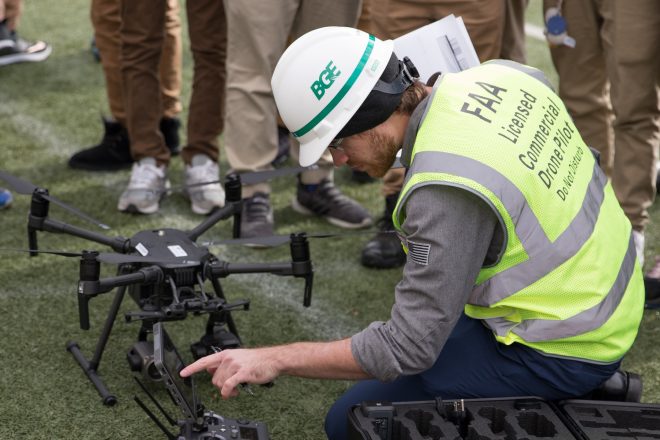
BGE drone operator Zack Ratchford prepares for launch from the Mervo High School football field.
“We’re allowed to go up 400 feet. Can anyone guess how high we are now?” McCauley yelled through the wind. Students peppered him with answers. One guessed 30 feet. “I got it!” he said after Ratchford confirmed the drone was 29 feet above the turf.
On Nov. 8, the BGE UAS team conducted this demonstration at Mervo and another at Green Street Academy (each a school in Baltimore City) to engage students in discussions around drone safety, the state of commercial drone use, drones’ tie to STEM education, and opportunities to pursue a career in drone aviation. The seminars were part of the team’s internal and external drone safety educational outreach that coincided with the Federal Aviation Administration’s first-ever National Drone Safety Awareness Week.
Shawn Kerr and Dave Brelsford’s classes arrived early. Nothing could temper their enthusiasm, said Kerr. “When they found out this was happening their first question was, ‘Can we fly the drones?’, to which I had to say, ‘No.’”
Kerr oversees Mervo’s participation in Project Lead The Way, a national program that helps schools prepare students for careers in engineering and other STEM fields. He considers experiential learning to be invaluable.
“Today our students get to learn about the things they don’t know they don’t know,” said Kerr. “They get to see things that they never thought they could do, never even fathom, never even imagine, and realize they can do it.”

Andy McCauley (left) and Zack Ratchford, drone operators on BGE’s UAS team, gave Mervo engineering students an overview of their work on Nov. 8, 2019.
BGE is currently testing the use of drones for equipment and infrastructure inspections as part of the company’s continuing effort to pursue innovative ways to enhance safety, reliability, and operational efficiency. McCauley and Ratchford are the only BGE employees qualified to fly drones on the company’s electric and gas systems. They are two of roughly 4,000 people in Maryland who work in the drone industry, including pilots, software developers, device technology developers, mechanics, and more. Drone employment is forecast to swell to 100,000 across the U.S. by 2025 with an economic impact of $82 million.
“We’re here today because you are the future,” said McCauley.
The BGE UAS team’s seminars are another way BGE is helping high school students discover utility careers that use skills acquired through STEM education. More information is available at bge.com.
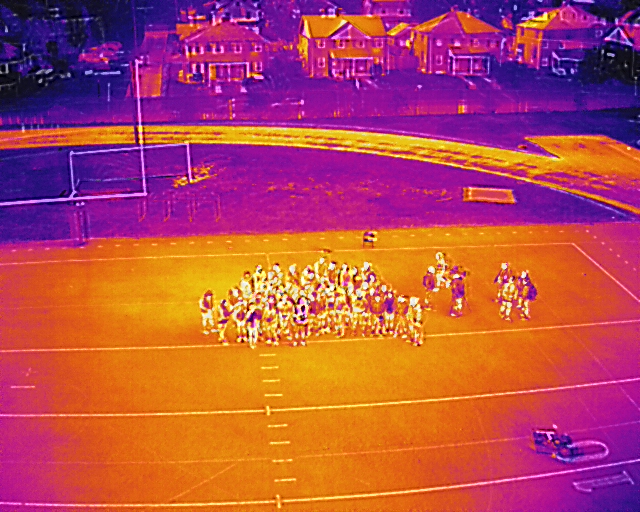
Thermal image of Mervo engineering students and the BGE UAS team. BGE uses thermal imaging to inspect equipment on the company’s system.

